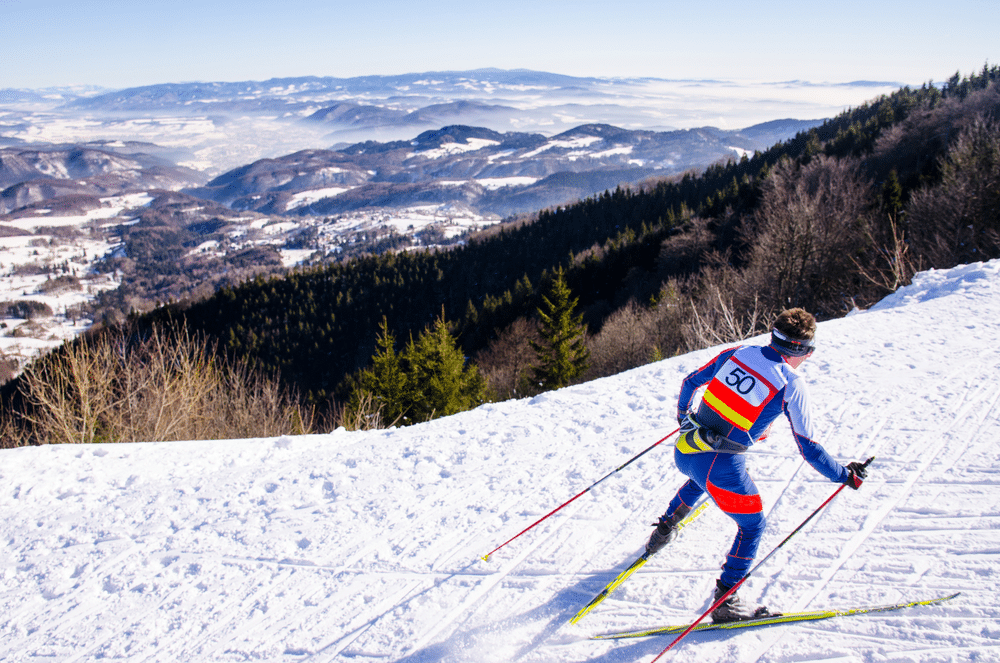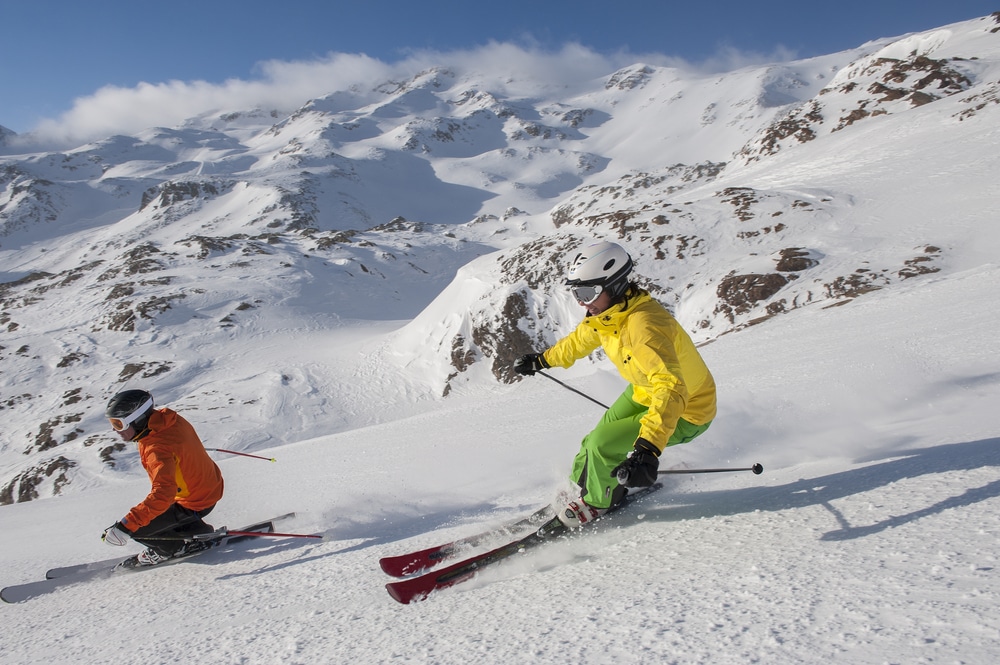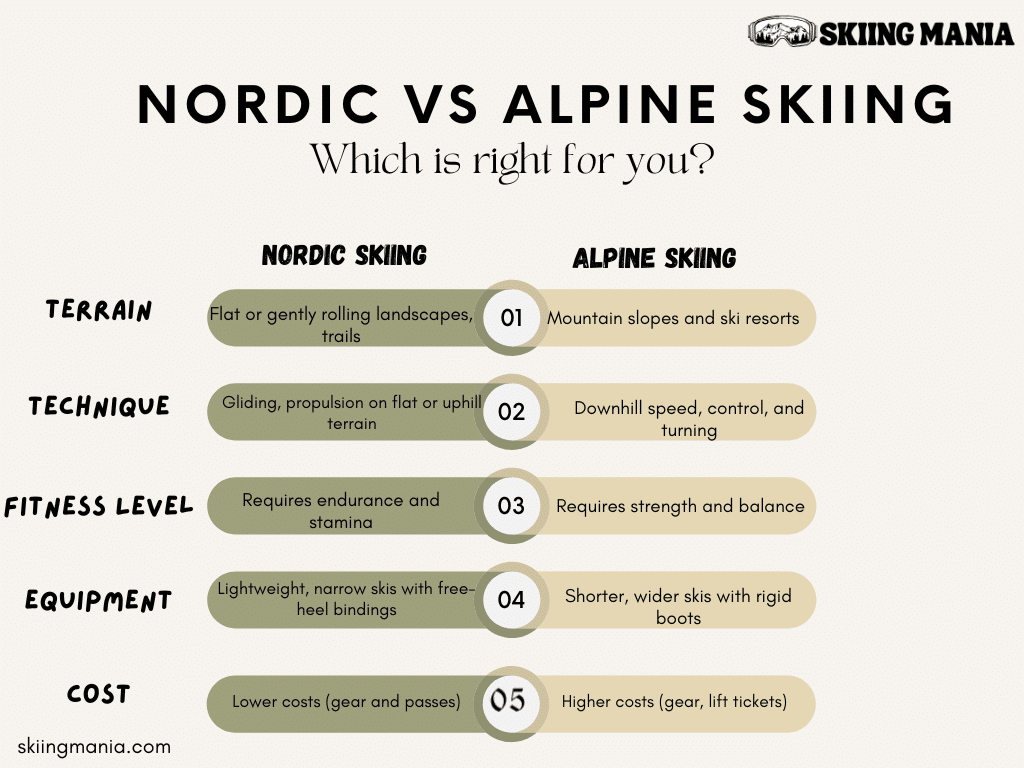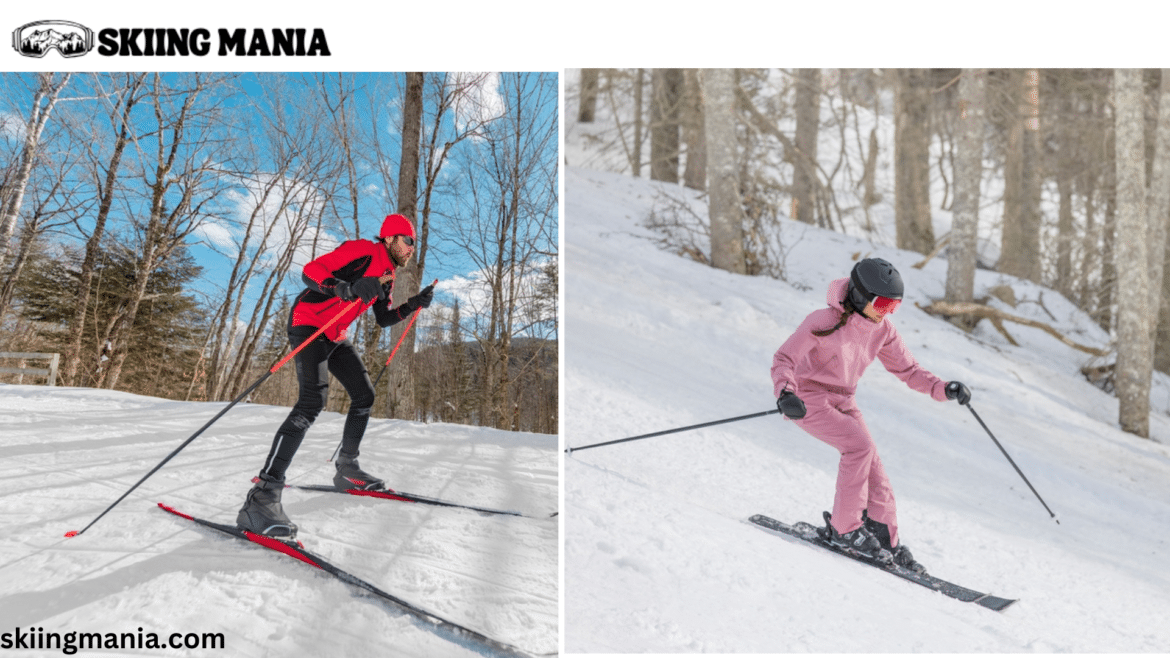Table of Contents
Imagine racing down steep slopes with your heart beating and your adrenaline surging, gliding smoothly across snow-covered landscapes while taking in the fresh mountain air. Nordic skiing vs alpine skiing—two styles with distinct thrills and challenges. Does the excitement of a downhill descent at a ski resort seem like your ideal winter getaway, or are you looking for a quiet, full-body workout that allows you to explore picturesque trails? Finding your rhythm on the snow is more important than terrain when deciding between alpine and nordic skiing. Let’s explore Nordic skiing vs alpine skiing and the unique perks of each style to help you hit the right trail.
Nordic Skiing (Cross-Country)

Nordic skiing, sometimes referred to as cross-country skiing, is primarily done on flat or undulating terrain with wide trails or tracks that are made to glide smoothly. This approach, which has its origins in Scandinavian customs, is frequently praticed on both ungroomed and groomed backcountry trails.
Technique
The two main styles of Nordic skiing are skate skiing and classic skiing. Classic skiing is perfect for a more laid-back experience because it follows parallel tracks. Similar to ice skating, skate skiing calls for greater power, speed, and endurance.
Benefits
Full-Body Workout
Nordic skiing uses almost every muscle in the body, making it a fantastic cardiovascular and strength-building activity
Lower Cost
Compared to Alpine skiing, Nordic skiing usually has less expensive equipment and passes.
Flexible Terrain
Nordic skiing can be enjoyed on trails, open landscapes, and backcountry terrain.
Perfect for All Skill Levels
This approach challenges seasoned athletes while providing a simple starting point for novices.
Equipment
Compared to Alpine skis, Nordic skis are often longer, lighter, and thinner. Poles are also taller to assist with propulsion on flat and uphill terrain. the bindings are only attached to the ski at the toe, allowing for a free heel, which is essential for both classic ski and skate ski techniques.
Alpine Skiing (Downhill)

Alpine skiing, often known as downhill skiing, is popular in ski resorts where lifts carry skiers uphill and occurs on mountains or hills with steeper slopes. It prioritizes speed, control, and the excitement of navigating downhill terrain.
Technique
When descending slopes, Alpine skiing emphasizes turning, speed control, and balance. Techniques include carving, parallel skiing, and snowplow turns. Terrain and difficulty vary, with beginner slopes to advanced black diamond skiing.
Benefits
Adrenaline Rush
Those looking for a daring challenge will find the faster tempo and steep descents of alpine skiing exhilarating.
Skill Development
Learning technique, balance, and turns is emphasized in alpine skiing, which may be enjoyable as you get better.
Resort Convenience
Most Alpine skiing is done at resorts, which offer equipment rentals, lessons, and facilities like restaurants and lodging.
Equipment
In order to improve control at high speeds, Alpine skis are wider and shorter than Nordic skis. Boots are rigid and designed to attach firmly to bindings, which are set to release during a fall for safety.
Nordic vs. Alpine Skiing: Choose Your Path

Take into account your individual tastes and objectives while choosing between Nordic and Alpine skiing:
Fitness vs. Thrill
Nordic skiing may be your best option if you enjoy a relaxed pace and are seeking for a workout. On the other hand, Alpine skiing is the best option if you’re itching for the rush of fast speeds and downhill runs.
Terrain Preferences
Consider the kinds of terrain that you like. Nordic skiing allows you to explore a variety of trails in natural settings, while Alpine skiing offers the challenge of marked slopes and ski runs.
Equipment Considerations
Each style has quite different skiing equipment. Nordic skiing is a better option if you like flexibility and light equipment. Select Alpine skiing if you desire the assistance and stability of heavy equipment for downhill performance.
Which Style Is Right for You?
Choose Nordic Skiing if you
- Take pleasure in an endurance-focused full-body workout.
- Prefer more peaceful, outdoor activities.
- Wish to ski in places without large ski resorts or on nearby trails.
- Look for a less expensive way to get into the sport.
Choose Alpine Skiing if you
- Are seeking a high-adrenaline experience with severe drops.
- Savor the ambience of lift-equipped and upscale ski resorts.
- Want to develop technical skills in turning and control on slopes.
- Are ready for the higher investment in lift tickets and gear.
Experimenting with each style is a fantastic method to determine which one you prefer, as each has its own perks.
Conclusion
Ultimately, while both Nordic and Alpine skiing provide thrilling ways to experience the snow, their preferences differ. Alpine skiing is best for those seeking quick downhill action and adventure, while Nordic skiing is best for those who enjoy exploring routes and want a terrific workout. Consider the type of experience you’re looking for, the equipment you feel most comfortable using, and the ski region that most excites you. Whichever option you select, you’re in for an exciting and adventurous winter! So prepare to enjoy the snowy season the way you want by grabbing your skis.

